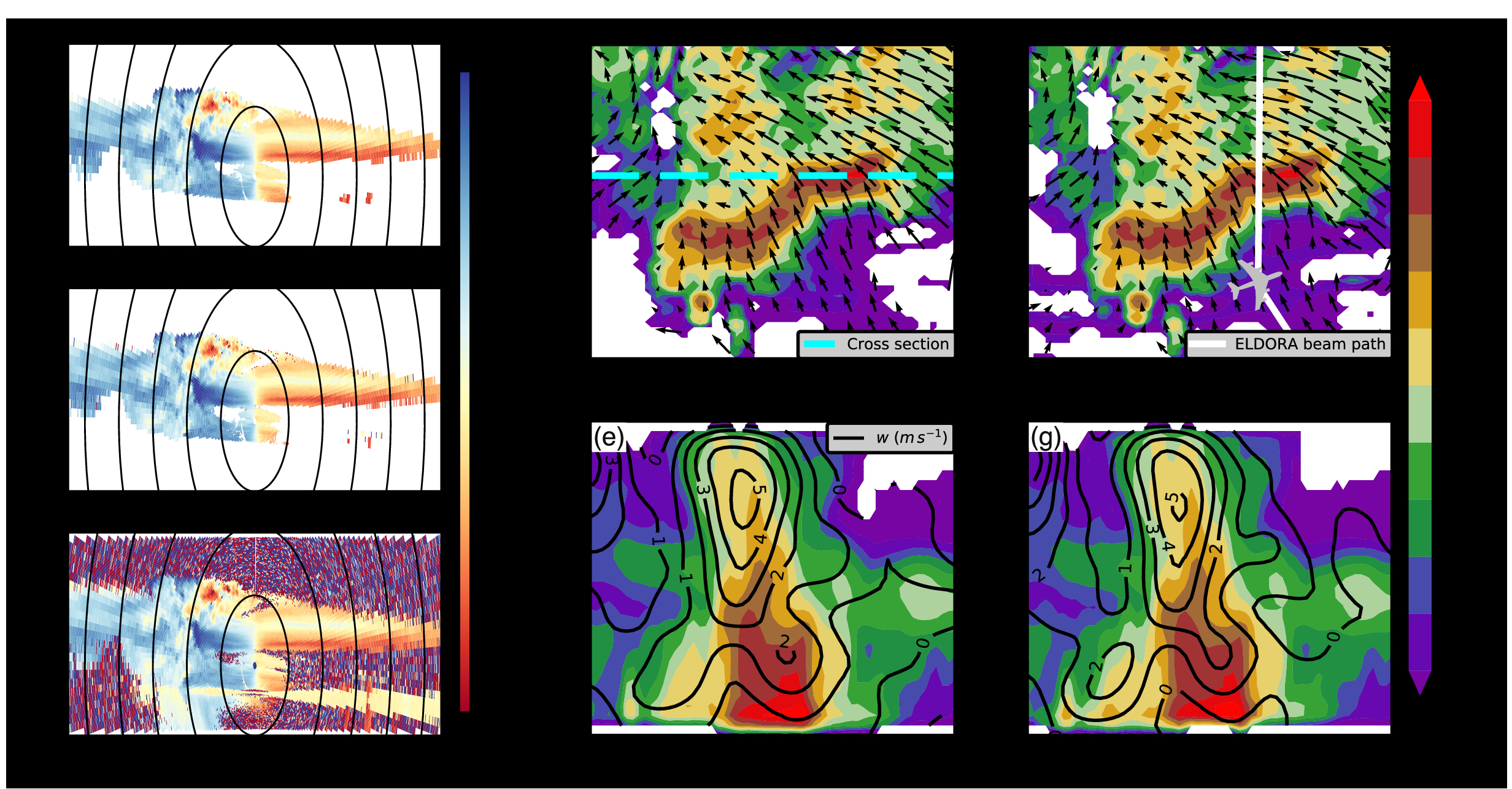DesRosiers, A. J, and M. M. Bell, : Airborne Radar Quality Control with Machine Learning. Artificial Intelligence for the Earth Systems, 3, e230064 , https://doi.org/10.1175/AIES-D-23-0064.1
Key Points
Plain Language Summary
Airborne Doppler radar is an invaluable tool for making detailed measurements of wind and precipitation in weather systems over remote or difficult to access regions, such as hurricanes over the ocean. Using the collected radar data depends strongly on quality control procedures to classify weather and non-weather radar echoes, and to then remove the latter before subsequent analysis or assimilation into numerical weather prediction models. Prior quality control techniques require interactive editing and subjective classification by trained researchers and can demand considerable time for even small amounts of data. This study describes a new machine learning algorithm that is trained on past quality control efforts from radar experts, resulting in an accurate, fast technique with far less user input required that can greatly reduce the time required for quality control. The new technique is based on random forest, which is a machine learning model composed of decision trees, to classify weather and non-weather radar echoes. Continued efforts to build on this technique could benefit future weather forecasts by quickly and accurately quality-controlling data from other airborne radars for research or operational meteorology.
Abstract
Airborne Doppler radar provides detailed and targeted observations of winds and precipitation in weather systems over remote or difficult-to-access regions that can help to improve scientific understanding and weather forecasts. Quality control (QC) is necessary to remove nonweather echoes from raw radar data for subsequent analysis. The complex decision-making ability of the machine learning random-forest technique is employed to create a generalized QC method for airborne radar data in convective weather systems. A manually QCed dataset was used to train the model containing data from the Electra Doppler Radar (ELDORA) in mature and developing tropical cyclones, a tornadic supercell, and a bow echo. Successful classification of ~96% and ~93% of weather and nonweather radar gates, respectively, in withheld testing data indicate the generalizability of the method. Dual-Doppler analysis from the genesis phase of Hurricane Ophelia (2005) using data not previously seen by the model produced a comparable wind field to that from manual QC. The framework demonstrates a proof of concept that can be applied to newer airborne Doppler radars.
Key Figure
A range–height indicator scan from the ELDORA radar plotted with Py-ART showing the (a) interactive, (b) MLQC, and (c) raw velocity fields at 2127 UTC 6 Sep 2005. (d) A horizontal cross section at 2-km altitude of reflectivity (colors; dBZ) and analyzed winds (vectors) using interactively QCed data centered at 2123 UTC. (e) A vertical cross section taken from west to east through the most intense convection, showing the reflectivity (color shading) and vertical wind component (black contours, in 1 m s−1 intervals). (f),(g) The same analysis as in (d) and (e), but using the ML method for QC. The path of the radar beam from the scan in (a)–(c) is shown as a white line in (f), and location of the cross section is shown as a dashed cyan line in (d).
Acknowledgments
This research was supported by National Science Foundation Awards OAC-1661663 and AGS-2103776, Office of Naval Research Award N000142012069, and NOAA APAR Risk Reduction Award NA19OAR4590245. We thank Bruno Melli for efforts that provided initial direction to the pro- ject and Wen-Chau Lee, Huaqing Cai, and Hannah Murphey for the original interactive QC of the dataset. We thank NCAR’s Earth Observing Laboratory for the ELDORA data collection.
